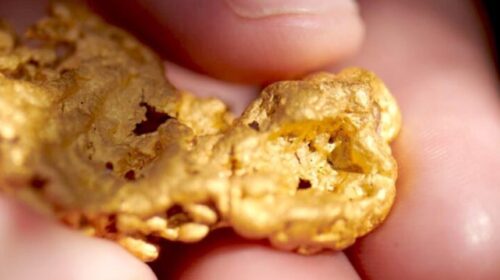How Madagascar intends to become one of the main alternatives to Chinese domination in graphite
On September 8, 2022, Tirupati Graphite announced the purchase of three mining permits covering 31.25 km² in Madagascar. The latest investment by this company, which already operates two graphite mines in the center of the Big Island, illustrates the attraction that graphite from Madagascar arouses thanks to the explosion in global demand for this product. An interest that could well position the country as a choice alternative to China.
In a report published in August 2022, the firm Wood Mackenzie predicts that Africa will become the world’s largest producer of natural graphite by 2026. By this date, the combined production of African countries should indeed represent 40% of supply. (against 15% in 2021), better than China, which will have to settle for 35% market share (against 68% last year). If several countries will contribute to this performance, the case of Madagascar nevertheless deserves attention. According to several concordant data, the Big Island is currently the second largest producer on the continent behind Mozambique, but will soon face the emergence of other African producers such as Tanzania, a country where graphite projects are numerous.
Source: Statista
Two engines…
In Antanarivo, however, there is no need to worry, because Madagascar can rely on a few very promising projects and count on the ambitions of the companies piloting them. Two of them deserve special attention, namely Tirupati Graphite and NextSource Materials. The first because it now provides the bulk of the country’s exports and the second because it intends to become the island’s largest producer in the medium term.
Tirupati symbolizes the rise of Madagascar as a major player in African graphite in recent years, even if the country is historically a major producer on the continent. Arriving in the country in 2017 with the takeover of the company Establissement Rostaing, the Anglo-Indian company notably inherited a dilapidated factory in Sahamamy capable of delivering only 200 tonnes of graphite per year.
It therefore decided to abandon these facilities and two years later commissioned a modern factory with an annual production capacity of 3,000 tonnes. A second plant with a production capacity of 18,000 tonnes of flake graphite should also come into service before the end of 2022, and bring the annual production of the Sahamamy mine to 21,000 tonnes. The company’s medium-term objective nevertheless remains to produce 84,000 tonnes of graphite by 2024.
To achieve this goal, Tirupati can count on a second mine, Vatomina. Also acquired in 2017, this project only started delivering graphite last year, with a processing plant with an annual capacity of 9,000 tonnes. A phased development over the next two years, through the addition of new ore processing modules, will achieve the goal of producing 84,000 tonnes of flake graphite each year, almost three times the national production Last year.
Finally, the recent acquisition of three new mining permits for graphite, near its two projects, allows the company to aim even higher, up to 200,000 tons per year in total.
“ These acquisitions can help us increase our overall production in Madagascar up to an additional 48,000 tonnes per year in due course. We intend to install around 50% of [our annual production capacity of 400,000 tonnes by 2030, editor’s note] in Madagascar ”, assures Shishir Poddar, executive chairman of Tirupati.
Similar objectives are displayed by NextSource Materials, active at the Molo graphite project in southern Madagascar. This mine, which is still expected to start production this year, should produce 17,000 tonnes of high-quality graphite concentrate annually for phase 1. The company is working in parallel to launch phase 2. According to a published preliminary economic assessment in March 2022, this phase could allow the mine to operate for a life of 26 years, with an average annual production of 150,000 tonnes of graphite concentrate.
What interest for Madagascar?
In Madagascar, the mining sector represents approximately 5% of GDP and 30% of exports. But this contribution has long been supported by the mineral sands activities of Rio Tinto and nickel/cobalt of Ambatovy. If the Tirupati Graphite mining companies and soon NextSource Materials will participate more in the revenues collected by the government and local communities thanks to the Mines, it should be noted that the current mining tax regime is quite light. The mining royalty is thus set at only 2% compared to 3 to 10% in other mining countries on the continent. Moreover, the mining code does not provide for compulsory free participation of the State in mining projects, which deprives the Malagasy State of the dividends collected by the other African States shareholders in the companies which hold the local mines.
It is to change this situation that a draft revision of the mining code, in force since 2005, has been discussed for more than three years. In particular, it provides for a mining royalty of 4 to 8% depending on the mining products, and the levy by the State of at least 20% of marketable production. This text, however more in line with the wave of revisions to mining codes observed in recent years on the continent, has aroused criticism from mining investors who invoke a final tax that would represent a quarter of the value of production. What discourage investment in the country, they assure.
Beyond the revision of the mining tax regime, the other project that would allow the government to take better advantage of the rush for its basement would be the incentive for local processing. The production of the raw material that is graphite concentrate represents a tiny part of the income generated by this value chain, which extends to the production of electric vehicles.
92 total views , 1 views today





